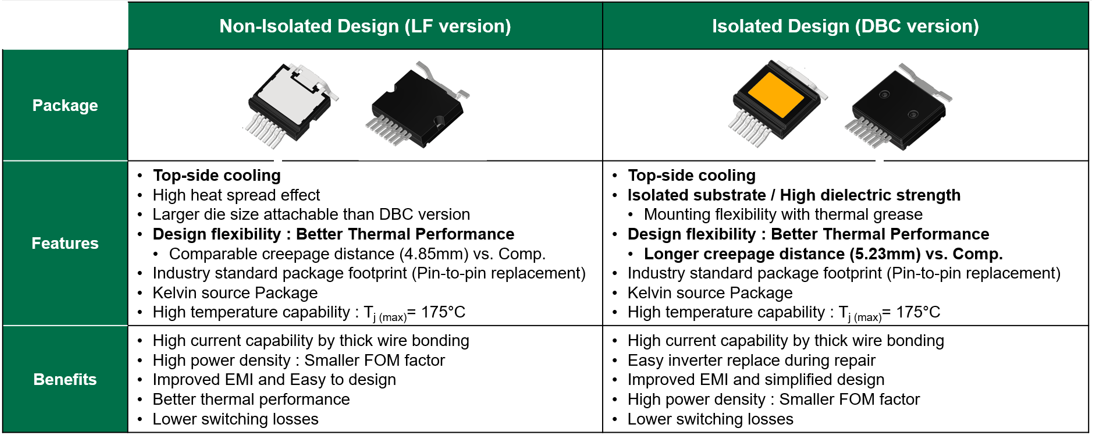-
LATEST NEWS / SiC / WBG3 Min Read
ROHM has announced the adoption of its EcoSiC™ products, including SiC MOSFETs and SiC Schottky barrier diodes (SBDs) in the HFA/HCA series of 3.5kW output AC-DC power supply units for 3-phase applications from COSEL, a leading power supply manufacturer in Japan. Incorporating ROHM SiC MOSFETs and SiC SBDs into the forced air-cooled HFA series and conduction-cooled HCA series achieves up to 94% efficiency. The HCA series has been mass produced since 2023, while the HFA series began mass production in 2024.
Many industrial applications that handle high power in the industrial sector, including MRI machines and CO2 lasers, require 3-phase power supplies that differ from the single-phase power supplies used in households. COSEL’s AC-DC power supply units – equipped with ROHM’s EcoSiC™ technology that excels in high-temperature, high-frequency, high-voltage environments – are compatible with 3-phase power supplies from 200VAC to 480VAC, contributing to improved power supply efficiency across a wide range of industrial equipment worldwide.
Jun Uchida, General Manager, New Product Development Dept. 2, COSEL Co., Ltd.
“The HFA/HCA series achieve high efficiency despite delivering a high-power output of 3.5kW by incorporating ROHM’s low-loss SiC power devices. Operating at high input voltages typically poses a challenge in reducing losses in high-voltage power devices, but using SiC power devices translates to significantly lower losses compared to conventional solutions, resulting in power supplies that maintains high efficiency and power density even under demanding high-power conditions.”
Akihiro Hikasa, Group General Manager, Power Devices Business Unit, SiC Business Section, ROHM Co., Ltd.
“We are delighted to support COSEL, an industry leader in power supply systems, by providing SiC power devices. A leading company in SiC power devices, ROHM also provides comprehensive power solutions that combine peripheral components. In addition, by addressing customer issues, we also improve device performance by incorporating the insights gained into our products. Going forward, we will continue to collaborate with COSEL to contribute to a sustainable society by enhancing the efficiency of industrial equipment that handle large amounts of power.”
The HFA/HCA series are 3.5kW power supplies featuring a wide input range (200VAC to 480VAC) that meets global power supply requirements. This allows them to be used anywhere in the world without the need to modify the power supply for each region, contributing to the standardization of application designs. Both forced air-cooled (HFA series) and conduction-cooled (HCA series) models – selectable based on operating environment – are available in 48V and 65V output voltage variants that can be used as power sources for a variety of high-power applications such as laser generation and MRI.
Original – ROHM
-
LATEST NEWS / PRODUCT & TECHNOLOGY / SiC / WBG3 Min Read
Power Master Semiconductor has announced the expansion of its e SiC MOSFET family with introduction of new AEC-Q101 qualified, high-performance top-side cooling packages. These include the TSPAK DBC version and LF version, specially designed for automotive and industrial applications.
The TSPAK offers superior thermal performance, high efficiency, power density and reliability, making it ideal for a variety of automotive applications such as on-board chargers (OBCs), DC-DC converters, and e-compressors. This innovative packaging leverages Power Master Semiconductor’s latest generation of 1200V eSiC MOSFET (Gen2), employing cutting-edge technology to decouple a trade-off between specific on-resistance (Rsp) and short-circuit withstand time (SCWT). Compared to the previous generation, the new 1200V eSiC MOSFETs deliver 20% reduction in RDS(ON) and a 15% improvement in SCWT, as well as a 45% reduction in switching losses.
Key Features and Benefits of TSPAK
TSPAK LF version
- Top-side cooling package with an exposed drain at the surface, allowing direct heat dissipation to the heatsink.
- Offers superior thermal performance and supports high current capabilities.
- High temperature capability : Tj (max)= 175°C
TSPAK DBC version
- Integrates an isolated DBC ceramic pad on the surface, providing premium thermal performance and enhanced design flexibility.
- Features 3.6kV isolation voltage, extended creepage distance (5.23mm), and flexible mounting by directly connected to an external heatsink with thermal grease.
- High temperature capability : Tj (max)= 175°C

With an industry-standard footprint of 14mm x 18.58mm, the TSPAK packages provide superior thermal performance and Kelvin source configuration to minimizes gate noise and reduces turn-on losses by 60%, enabling higher-frequency operation and improved power density.
The PCR120N40M2A (LF version) and PCRZ120N40M2A (DBC version) are automotive-grade 1200V/40mΩ eSiC MOSFETs in TSPAK packages, leveraging Power Master Semiconductor’s 2nd-generation eSiC MOSFET technology to deliver optimized performance for the automotive systems.
- E-compressors, vital for efficient thermal management, extended battery life, enhanced charging efficiency, and improved driving range.
- Totem-Pole PFC and CLLC/DAB (Dual Active Bridge) topologies, essential for bidirectional power conversion in 800V battery systems used in electric vehicles.
“Cooling is one of the greatest challenges in high power design and successfully addressing it is the key enabler to reducing size and weight, which is critical in modern automotive design” said Namjin Kim, Senior Director of Sales & Marketing. “Our new top-side cooling package offer better system efficiency and minimize heat thermal path on the PCB, the system design will be simplified and compacted. We are confident that this innovative solution will be the optimal choice for high-performance automotive applications.”
“Efficient cooling is a critical challenge for reducing size and weight of high-power automotive systems,” said Namjin Kim, Senior Director of Sales & Marketing. “Our new top-side cooling package enhances system efficiency and minimizes the thermal path on the PCB, enabling simpler, more compact system designs. We believe this innovative solution will drive the high performance automotive applications.”
Original – Power Master Semiconductor